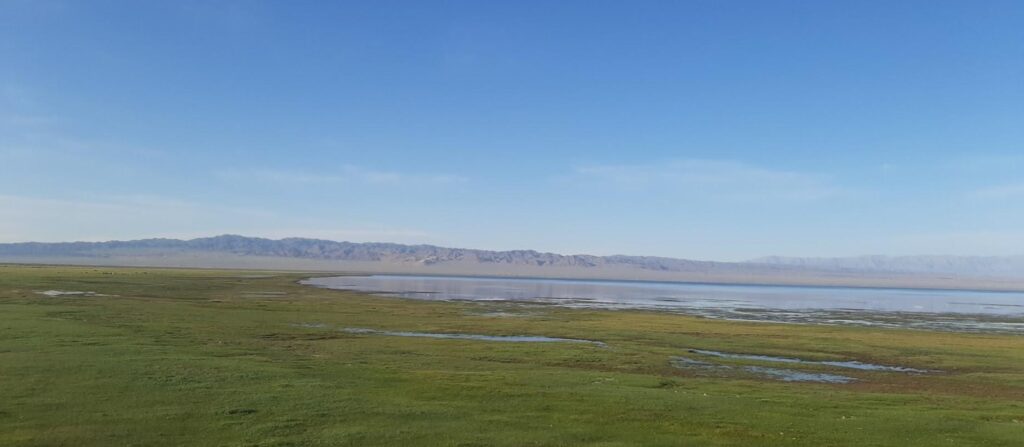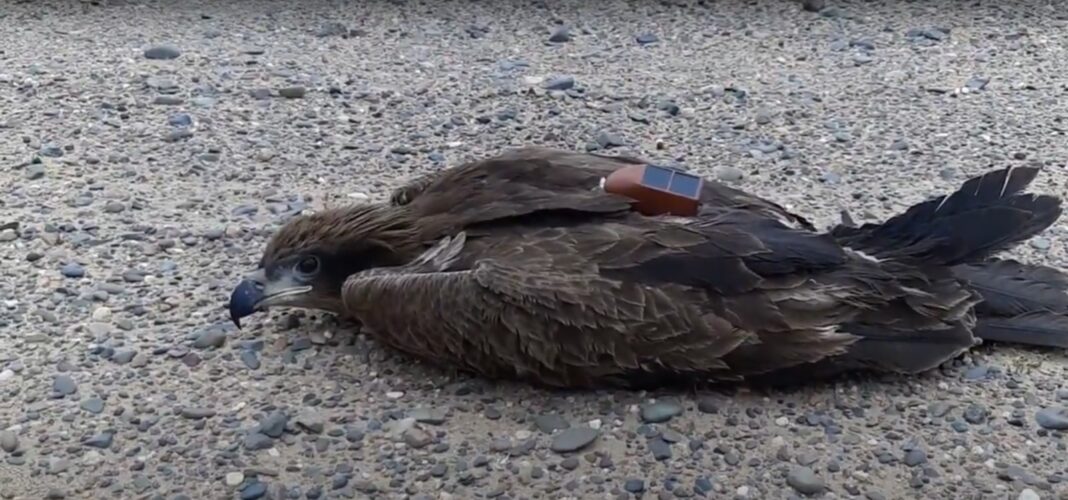Guwahati, April 7: An exciting discovery has been made in the wetlands of Kaziranga National Park, Assam. Scientists from the Bombay Natural History Society (BNHS) recorded a Pallas’s Fish Eagle (Haliaeetus leucoryphus) bearing a numbered ring marked “A 25.” A closer look at the global registry revealed an astonishing connection—this bird had been tagged in Mongolia by renowned ornithologist Dr. Batmunkh of the Wildlife Science and Conservation Center (WSCC).
Identified as a male named Ider, this eagle’s journey between Mongolia and India over the past five years underscores the fascinating and lesser-known phenomenon of ‘reverse migration’ in this endangered species.

Pallas’s Fish Eagle, one of the largest fishing eagles, was once considered locally common across central and southern Asia. However, habitat destruction, declining fish stocks, and human disturbance have led to a sharp contraction of its range. The species, formerly categorized as “Vulnerable” by the International Union for Conservation of Nature (IUCN), was reclassified as “Endangered” in 2021, with an estimated global population of merely 2,500 to 9,999 mature individuals.
Kaziranga National Park, with its vast network of wetlands, has become one of the last strongholds for this elusive eagle. Unlike many other migratory birds that escape cold winters by flying south, Ider’s annual journey defies conventional migration patterns. This remarkable raptor breeds in Kaziranga between November and March before making its way back to Mongolia’s Buuntsagaan Lake during the non-breeding season from June to September.
Ider’s migratory path sheds light on the critical yet poorly understood Central Asian Flyway (CAF), one of the nine major global bird migration corridors. Spanning 30 countries from Siberia to the Indian Ocean, the flyway is home to 182 migratory waterbird species, yet scientific studies on its raptor populations remain scarce. In India, over 370 migratory bird species traverse this route, with 310 of them relying on wetlands like Kaziranga. Despite the flyway’s importance, only a fraction of India’s avian species have been tracked using satellite telemetry, making Ider’s documentation a significant milestone.

Designated as a UNESCO World Heritage Site and a Tiger Reserve, Kaziranga has been a beacon of conservation for over a century. It hosts an astonishing diversity of over 500 bird species, including several globally threatened waterbirds. The park’s extensive wetlands, fed by the Brahmaputra River and its tributaries, provide a haven for migratory birds seeking refuge from harsher northern climates.
In the 6th Kaziranga Waterbird Count conducted in January 2025, researchers recorded 112,062 individual birds from 124 species, including winter migrants. Among these, seven species were classified as globally threatened, with the Pallas’s Fish Eagle standing out as a highlight. The rare Baer’s Pochard, listed as Critically Endangered, was also sighted, reinforcing the importance of Kaziranga as a key wintering ground for endangered waterbirds.
The discovery of Ider’s continued return to Kaziranga underscores the park’s role in global bird conservation. Assam’s Chief Minister, Dr. Himanta Biswa Sarma, took to social media to celebrate this achievement, tweeting, “The endangered Pallas’s Fish Eagle, tagged in Mongolia, has made Kaziranga its breeding ground for five straight years, putting Assam on the map of epic bird migrations. Witnessed these winged wonders.”
WATCH:
Find latest news from every corner of Northeast India at hubnetwork.in, your online source for breaking news, video coverage.
Also, Follow us on-
Twitter-twitter.com/nemediahub
Youtube channel- www.youtube.com/@NortheastMediaHub2020
Instagram- www.instagram.com/ne_media_hub
Download our app from playstore – Northeast Media Hub





